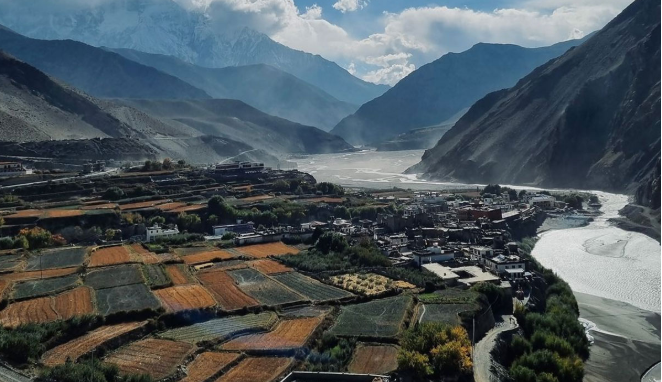The Annapurna Circuit trek stands as one of Nepal’s crown jewels in trekking experiences, drawing thousands of adventure enthusiasts annually to its breathtaking landscapes. This comprehensive guide explores the essential aspects of this legendary trek, from its varied terrain and cultural richness to detailed cost breakdowns and recommended itineraries.
The Magnificent Annapurna Circuit Trek
The Annapurna Circuit, often dubbed “the apple pie trek” due to the prevalence of this Western dessert in teahouses along the route, delivers a remarkably diverse trekking experience. Encircling the Annapurna massif, this trail ventures through dramatic ecological zones, from subtropical forests at lower elevations to alpine environments and the arid, Tibet-like landscape of the Manang Valley.
What sets the Annapurna Circuit apart from other Himalayan treks is its exceptional variety. Trekkers witness the majestic panorama of peaks including Annapurna I (8,091m), Dhaulagiri (8,167m), Manaslu (8,156m), and the distinctive Machapuchare (6,993m). Beyond natural splendor, the route passes through diverse ethnic settlements of Gurung, Manangi, and Thakali communities, offering rich cultural immersion opportunities.
The circuit traditionally begins in Besisahar and concludes in Nayapul, though road construction has shortened the classic route in recent years. The highlight for most trekkers is crossing the challenging Thorong La Pass (5,416m), representing the highest point of the trek and offering unparalleled mountain vistas.
Annapurna Circuit Trek Cost Breakdown
Understanding the financial requirements for the Annapurna CircuitTrek Cost helps in planning a well-budgeted adventure. Costs vary based on trekking style, season, and personal preferences.
Permits and Documentation
- ACAP (Annapurna Conservation Area Permit): $30
- TIMS (Trekkers’ Information Management System) Card: $10
- Transportation to Besisahar and from Nayapul/Pokhara: $30-60
Daily Expenses
- Teahouse accommodation: $5-15 per night
- Meals (breakfast, lunch, dinner): $15-25 per day
- Drinking water/beverages: $3-8 per day
- Hot showers (at higher elevations): $2-5
- Charging electronic devices: $1-3 per device
Optional Expenses
- Guide services: $25-35 per day
- Porter services: $20-25 per day
- Travel insurance (highly recommended): $50-150 for the trip duration
- Additional gear rental if needed: $5-15 per item
- Side excursions (like Tilicho Lake): $20-50
The total Annapurna Circuit trek cost typically ranges from $700-1,200 for budget trekkers on a 12-18 day itinerary, excluding international flights. This estimate covers basic amenities, permits, transportation, and modest daily expenses. Trekkers seeking more comfort or additional services should budget approximately $1,200-1,800.
Cost-saving strategies include:
- Trekking during the shoulder seasons (early October or late April)
- Negotiating room rates during less busy periods
- Carrying sufficient snacks from Kathmandu/Pokhara
- Trekking independently if you have sufficient experience
- Sharing guide costs with other trekkers
Comprehensive Annapurna Circuit Trek Itinerary
While flexibility remains key in mountain environments, a well-structured Annapurna Circuit Trek itinerary provides a solid foundation. The following 14-day itinerary represents a reasonably paced circuit trek:
Day 1: Kathmandu to Besisahar (760m) Begin your journey with a scenic 6-7 hour drive from Kathmandu to Besisahar, the traditional starting point for the Annapurna Circuit. Overnight in this bustling gateway town to acclimatize and finalize preparations.
Day 2: Besisahar to Chamje (1,430m) The trek commences through terraced rice fields and subtropical forests. Cross suspension bridges over the Marshyangdi River while enjoying views of cascading waterfalls. This day involves approximately 6 hours of walking.
Day 3: Chamje to Dharapani (1,960m) Gradually gain elevation while traversing bamboo and rhododendron forests. The terrain becomes increasingly rugged as you enter the Manang district, with notable changes in architecture and cultural practices.
Day 4: Dharapani to Chame (2,710m) Today presents magnificent views of Annapurna II and Lamjung Himal. The trail follows the Marshyangdi River upstream through pine forests to Chame, the administrative headquarters of Manang District.
Day 5: Chame to Upper Pisang (3,300m) Experience dramatic changes in landscape as the valley narrows between towering peaks. The Buddhist influence becomes more pronounced with prayer wheels and mani walls marking the trail.
Day 6: Upper Pisang to Manang (3,540m) Take the higher route via Ghyaru and Ngawal for spectacular mountain panoramas. This challenging day rewards with stunning views before descending to Manang, where an acclimatization day follows.
Day 7: Acclimatization in Manang Crucial for adapting to higher elevations, this rest day offers options for short hikes to Ice Lake or Gangapurna Lake. Attend free altitude sickness prevention talks typically offered in local bakeries.
Day 8: Manang to Yak Kharka (4,018m) A shorter trekking day with significant elevation gain through alpine landscapes. Observe blue sheep and perhaps snow leopard tracks if fortunate. The vegetation thins noticeably as you approach the high-altitude desert.
Day 9: Yak Kharka to Thorong Phedi (4,450m) Continue ascending gradually to properly acclimatize. Thorong Phedi (meaning “foot of the hill”) serves as the base camp before crossing Thorong La Pass. Early dinner and rest are essential for the challenging day ahead.
Day 10: Thorong Phedi to Muktinath (3,800m) via Thorong La Pass (5,416m) The most demanding and rewarding day begins pre-dawn (around 4 AM). Steadily climb to Thorong La Pass, where prayer flags commemorate this significant achievement. The lengthy descent to Muktinath offers dramatically different landscapes on the west side of the Annapurnas.
Day 11: Muktinath to Marpha (2,670m) Visit the sacred Muktinath Temple before descending into the Kali Gandaki Valley, recognized as the world’s deepest gorge. The trail passes through Jomsom before reaching the charming apple-producing village of Marpha.
Day 12: Marpha to Kalopani (2,530m) Follow the Kali Gandaki riverbed with spectacular views of Dhaulagiri and Annapurna I. Witness the fascinating cultural blend of Thakali traditions mixed with Tibetan influences.
Day 13: Kalopani to Tatopani (1,200m) Descend significantly through pine and rhododendron forests. Tatopani (“hot water”) is named for its natural hot springs—perfect for soothing tired muscles after nearly two weeks of trekking.
Day 14: Tatopani to Pokhara Most trekkers opt for jeep transportation from Tatopani to Pokhara, completing the circuit. Alternatively, continue trekking via Ghorepani and Poon Hill for additional days and views before concluding in Nayapul.
Best Seasons for the Annapurna Circuit
The optimal windows for completing the Annapurna Circuit are:
- Autumn (September-November): Prime trekking season with clear skies, moderate temperatures, and exceptional mountain visibility. Peak visitor periods mean busier trails and teahouses.
- Spring (March-May): The second-best season features blooming rhododendrons and stable weather patterns. Expect some afternoon clouds but generally favorable conditions.
- Winter (December-February): Dramatically fewer trekkers and crystal-clear mountain views, though Thorong La Pass may become impassable after heavy snowfall. Lower temperatures require additional warm gear.
- Monsoon (June-August): Generally not recommended due to leeches, slippery trails, and limited visibility. However, the rain shadow effect in parts of the circuit (particularly Upper Mustang) means some sections remain relatively dry.
Conclusion
The Annapurna Circuit trek represents more than a mere physical journey—it offers profound cultural immersion, ecological diversity, and personal challenge against the backdrop of some of the world’s most spectacular mountain scenery. While road construction has altered sections of the traditional route, thoughtful itinerary planning using high-route alternatives preserves the adventure’s essence.
Whether you’re drawn by the cultural tapestry of ancient trade routes, the challenge of crossing Thorong La Pass, or simply the allusion of walking among giants in the Himalayan amphitheater, the Annapurna Circuit delivers an unforgettable trekking experience. With proper preparation, reasonable budget allocation, and respect for acclimatization protocols, this iconic trek remains accessible to moderately experienced trekkers seeking the quintessential Himalayan adventure.

